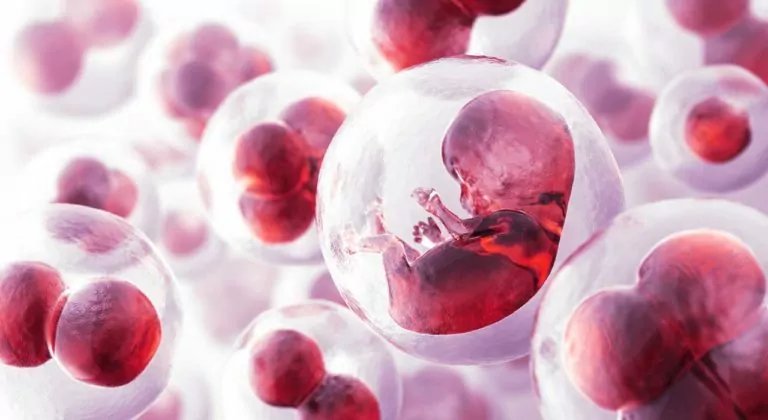Human experimentation has been happening around the world for the past four decades, with research scientists actively carrying out experiments on human embryos. The stated objective, in usually something noble-sounding: to learn more about human biology, or to possibly treat some disease conditions. And while few scientists will admit to an interest in cloning people, or in actually producing genetically-altered individuals, this is the direction our society is heading.
Indeed, modern society does not value unborn babies enough to protect them, and at the same time society is terribly afraid of genetic abnormalities. Under these conditions – little respect for unborn human life, and little respect for those with genetic abnormalities like Down syndrome – it would seem human cloning and gene alteration is inevitable.
But it isn’t acceptable yet.
That became clear when, on November 26, 2018, the scientific and medical world reacted in horror to the announcement by Dr. Jiankui He at the Second International Summit on Human Genome Editing in Hong Kong, that he had created modified human embryos. These embryos had been implanted in their mother, and in early November, twin baby girls had been born in China. This was a world-wide first – the first genetically-edited full-term human babies.
What happened
Ever since the 1970s introduction of in vitro fertilization of human eggs with sperm outside the womb, the stage was set for scientists to experiment on such embryos. Many people, mindful of the special nature of humans at every level of development, protested against such work. Even some scientists were nervous about the implications of these experiments.
However, for many, the concern was only that individuals damaged in laboratory experiments should not be allowed to develop to term. They were okay with the human experimentation – they just didn’t want these babies to be born.
As a result, a general understanding was reached between ethicists and scientists, that no experiments on embryos would continue longer than 14 days – at this point these embryos were to be destroyed. The 14-day limit was chosen because it is at this point that the embryos begin to develop specialized tissues and thus becomes more obviously human (Nature July 5, 2018 p. 22).
But as the experimentation has become more sophisticated, scientists have begun to promote the idea of a longer timeline for their investigations. Thus, a conference was held in May at Rice University at which 30 American scientists and ethicists discussed “whether and how to move the [14-day] boundary” (Nature July 5, 2018 p. 22). About the same time, Nature magazine published an announcement concerning such research:
“At present, many countries …prohibit culture [of human embryos] beyond 14 days, a restriction that reflects the conclusions of the 1984 UK Report of the Committee of Inquiry into Human Fertilization and Embryology (also known as the Warnock Report. Whether this rule should be relaxed is currently being debated” (May 3, 2018 p. 6, emphasis mine).
Scientists are clearly seeking to relax the rules governing their studies.
“Germ-line changes”
Research on human embryos has continued worldwide since those early days. However, all parties once agreed that on no account should modified embryos be implanted into a mother and be allowed to develop. The reasons included society’s disapproval of experiments on people, but especially because such individuals would carry “germ-line changes.” Changes to most cells in the human body have no impact on future generations – these changes die with that individual. However, changes to the gametes (egg and sperm) are called germ-line changes because these modifications will be passed on to each subsequent generation.
It is not that the scientists involved actually object to germ-line changes. The problem is that they want their results to be predictable and “safe.” Any uncertainties could lead to catastrophic results, ensuing hostile public opinion and big lawsuits. It would be far better to proceed cautiously. Thus, it is illegal in the US and many other countries to alter genes of human embryos or gametes.
However, within the last decade, another new biomedical technology has appeared on the scene that has drastically streamlined gene editing in numerous organisms. The CRISPR-Cas9 technology has made gene editing much easier and much more precise.* Obviously, it was a mere matter of time before someone used this to try his hand at gene editing in human embryos. The scientific community offered no serious objections when Dr. Jiankui He of China presented an account of such work at a conference at Cold Spring Harbor Laboratory in New York during the spring of 2018. At this conference, Dr. He discussed the editing of embryos from seven couples. However, at that point, this man made no mention that any of these embryos had been implanted into their mothers.
Dr. He “edits” babies to be HIV-resistant
According to a Nov. 28 news item at Nature.com (David Cyranoski’s “CRISPR-baby scientist fails to satisfy critics”) Dr. He recruited couples in which the male was HIV positive but the female was normal. Individual sperm cells were washed to remove any viruses and the cells were injected into eggs along with CRISPR-Cas9 enzymes carrying a gene for resistance to HIV infection. A total of 30 fertilized embryos resulted of which 19 were deemed viable (able to live) and apparently healthy. These were tested for the CCR5 mutation which confers resistance to HIV infection. From one couple, two of four embryos tested positive for the mutation. One embryo carried the mutated gene on one chromosome and a normal gene on the other, while the other embryo carried the mutation on both maternal and paternal chromosomes. These embryos were implanted into the mother who successfully gave birth to twin baby girls early in November.
No information was forthcoming on the fate of the other embryos, although Dr. He now says that another woman may be pregnant.
The response of the scientific community has been shock and horror. But why are they so horrified? Is this not what they have been working towards? The scientific community is afraid because the risks of this procedure at this preliminary stage of research, are substantial. There are, at present, major questions as to whether the genetic modifications will actually have the desired effect. A well-known problem is that the CRISPR apparatus sometimes cuts the chromosomes at other places as well as/ or instead of the desired location. This off-target effect has been found to be a major problem in some studies. In addition, most genes are known to influence a number of seemingly unrelated traits. This phenomenon is called pleiotropic impact of one gene on other genes. These risks are particularly serious when we consider that these are germ-line changes, that will impact subsequent generations from this individual.
Response
The same Nov. 28 Nature.com news item declared:
“Fears are now growing in the gene-editing community that He’s actions could stall the responsible development of gene editing in babies.”
Indeed, a commentator on one website reflected that “if this experiment is unsuccessful or leads to complications later in life … [it could] set the field of gene therapy back years if not decades.”
In view of these concerns, many individuals and medical and scientific institutions released statements expressing condemnation for this gene-editing work. Dr. Francis Collins, director of the National Institutes of Health in the United States, declared that the NIH “does not support the use of gene-editing technologies in human embryos.” The Chinese Academy of Sciences declared that Dr. He’s work “violates internationally accepted ethical principles regulating human experimentation and human rights law.” A colleague and friend of Dr. He suggested that the gene-editing work lacked prudence, that it could, unfortunately, serve to create distrust in the public.
Obviously, an important concern on the part of the scientists was that the promise of this technology not be rejected by the public. Dr. David Liu of Harvard and MIT’s Broad Institute (heavily involved in CRISPR research), insisted of He’s work: “It’s an appalling example of what not to do about a promising technology that has great potential to benefit society.”
Dr. George Daley, dean of Harvard Medical School, summed up the feelings of many colleagues when he said:
“It’s possible that the first instance came forward as a misstep, but that should not lead us to stick our heads in the sand and not consider [a] more responsible pathway to clinical translation.”
In other words, many scientists seek to continue to pursue the goals also sought by Dr. He, only the rest of them will proceed more slowly and carefully.
Conclusion
It is largely Christian objections to treating human embryos as things, rather than as persons (made in the image of God), that has led to the ethical rules that control this research. It is a vestige of our Judeo-Christian heritage which limits scientists from just doing whatever they want. They have to obtain permission from ethics committees to conduct their particular research program. Of course, Christians want to see this work made completely illegal, but if political realities make such a ban impossible, then we can still seek to restrict this work as much as possible.
It is interesting that a news feature in Nature (July 5, 2018 p. 22) articulated the fascination and unease that some scientists derive from this work. Bioethicist Dr. Jennifer Johnston of the Hastings Center in upstate New York, reflected on the respect that the human embryo commands even in secular observers:
“That feeling of wonder and awe reminds us that this is the earliest version of human beings and that’s why so many people have moral misgivings ….. It reminds us that this is not just a couple of cells in a dish.”
Are there any good results from this controversy over genetically-engineered babies? Perhaps there is one. The event may cause more people to pay critical attention to the experiments that are, every day, conducted on human embryos. Let the whole world know that we are fearfully and wonderfully made, from the very first cell onward, and manipulation in laboratories should have no place in our society.
For further study
* For more on this topic, see:
- Dr. Helder’s book No Christian Silence on Science pages 32-39 for a discussion on Clustered Regularly Interspaced Short Palindromic Repeats (ie. CRISPR).
- Jennifer Doudna and Samuel Sternberg’s book A Crack in Creation: the new power to control evolution, page 281.
- Dr. Helder’s article, providing further background to CRISPR, Natural Firewalls in Bacteria











